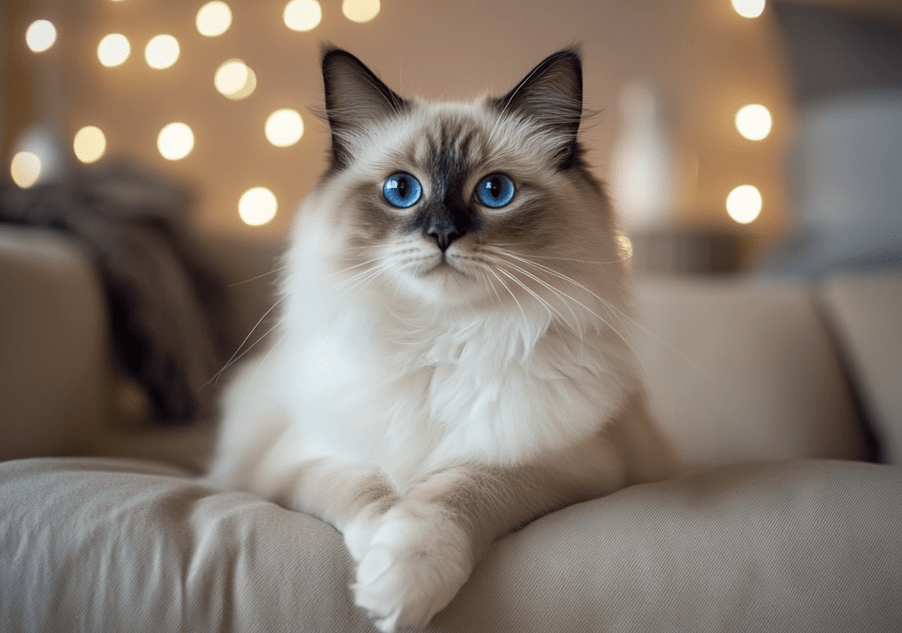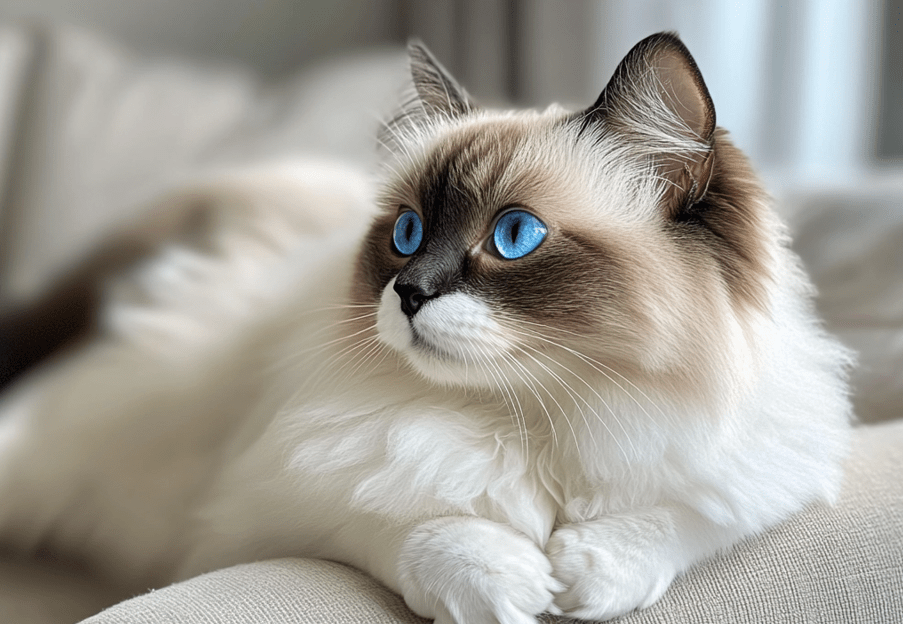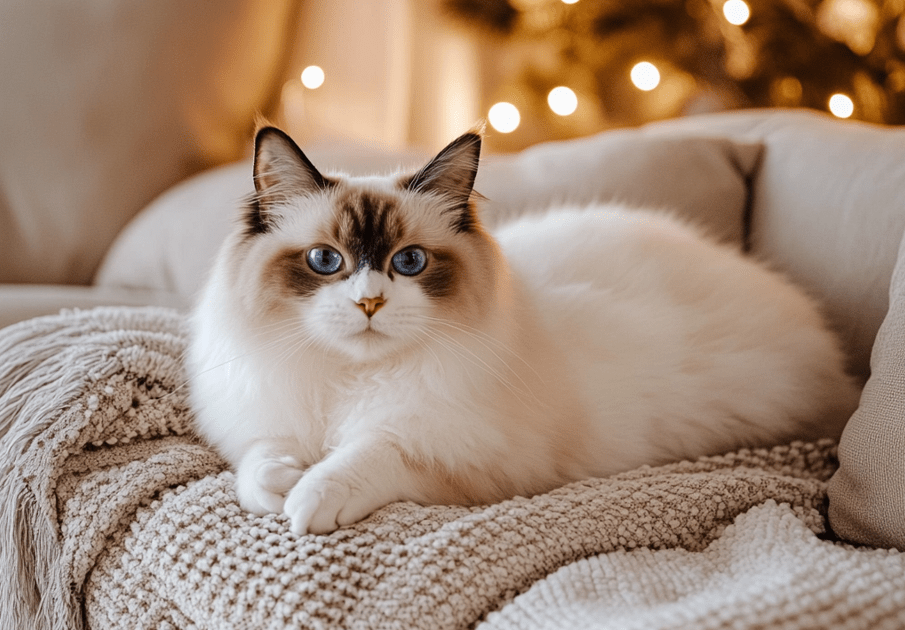
Understanding common Ragdoll cat behavior problems is essential for providing a happy and stress-free environment for this affectionate breed. Ragdoll cats are so sweet and gentle animals, that they are known for hardly ever being trouble for their owners. It will probably develop some of its lively and intelligent nature, but over time, some behavioral problems may arise, especially if the cat does not have a place to exercise its natural instincts. It is important to understand and resolve these behaviors so your cat is happy and healthy.
This guide explains 11 common behavioral problems related to Ragdoll cats and expert-recommended solutions to guarantee that you can develop a harmonious coexistence with your feline counterpart.
Ragdoll Cat Behavior Problems: How to Identify and Solve Them
Understanding Ragdoll cat behavior problems is crucial for owners who want to maintain a peaceful environment for their affectionate feline companions. Ragdoll cats, known for their friendly and docile nature, can occasionally exhibit behavioral issues that need attention. From aggression to excessive grooming, addressing these issues will help keep your Ragdoll healthy and content.
Behavior Problems Seen in Ragdoll Cats
1.Aggressive Behavior
2.High Maintenance Requirements
3.Excessive Grooming
4.Tendency to Roam Outdoors
5.Shedding Concerns
6.Seeking Constant Attention
7.Picky Eating Habits
8.Litter Box Avoidance
9.Furniture Scratching
10.Weight Management Challenges
11.Frequent Vocalization
Ragdoll Cat Behavior: Common Aggressive Behaviors and How to Handle Them

Ragdoll cats are typically gentle, but sometimes they can display aggression. This might include hissing, scratching, or even biting. The causes can range from fear and discomfort to medical issues like urinary tract infections. Addressing Ragdoll cat behavior problems related to aggression involves not only behavior modification but also ensuring that your cat is healthy and well-socialized.
Before aggression can be addressed, however, the first thing to do is rule out any medical causes. Proceeding with behavior changes can only happen after treating any identified health issue.
Further approaches to reduce aggression include:
1.Providing a place your cat can escape when they feel stressed or anxious.
2.Doing interactive play but not jamming a toy down a cat who is not interested in working with you.
3.Visiting a vet to test and address any possible health issues.
Understanding Ragdoll Cats’ Behavior: High Maintenance and Emotional Needs

Ragdoll cats have a unique need for attention and affection, making them highly interactive companions. However, this high-maintenance behavior can lead to stress if not managed correctly. Understanding Ragdoll cat behavior in terms of emotional needs helps owners provide a fulfilling, secure environment. Regular playtime and a sense of security are key to maintaining their happiness.
How to Address Excessive Grooming in Ragdoll Cats
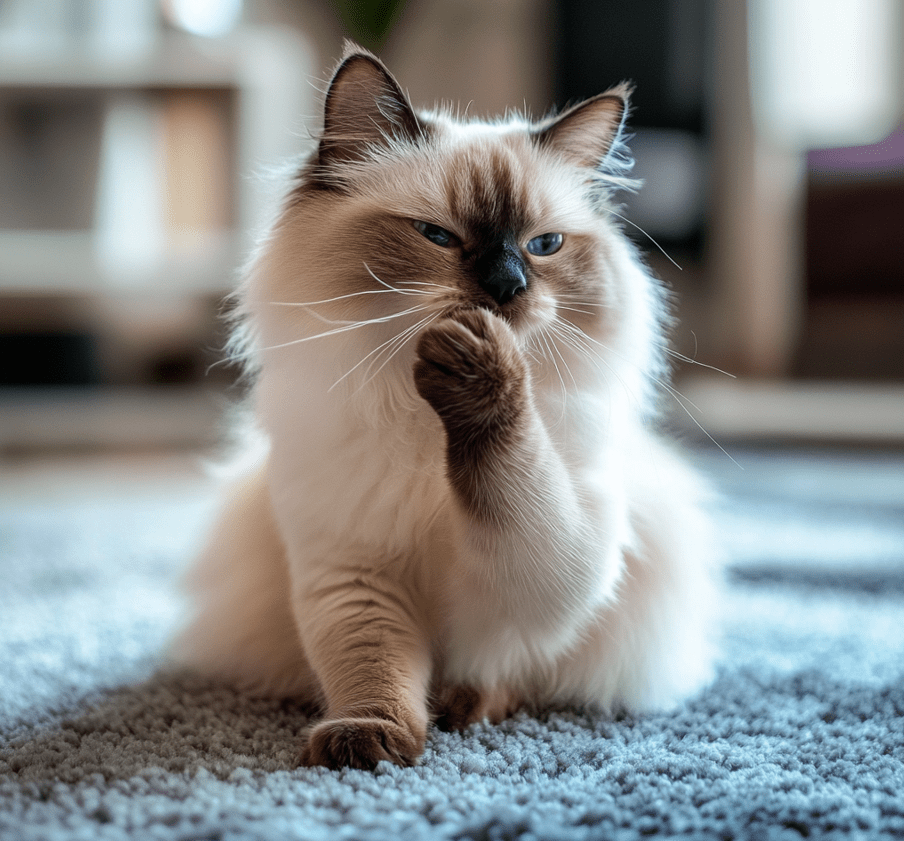
Over-grooming is a common problem for Ragdoll cats. This behavior often stems from anxiety or boredom, but can also be linked to genetics. By understanding the grooming needs of Ragdoll cats, you can create a routine that minimizes over-grooming while promoting overall skin and coat health. Regular brushing and providing mental stimulation can help curb this behavior.
Ragdoll Cat Behavior and the Tendency to Roam Outdoors
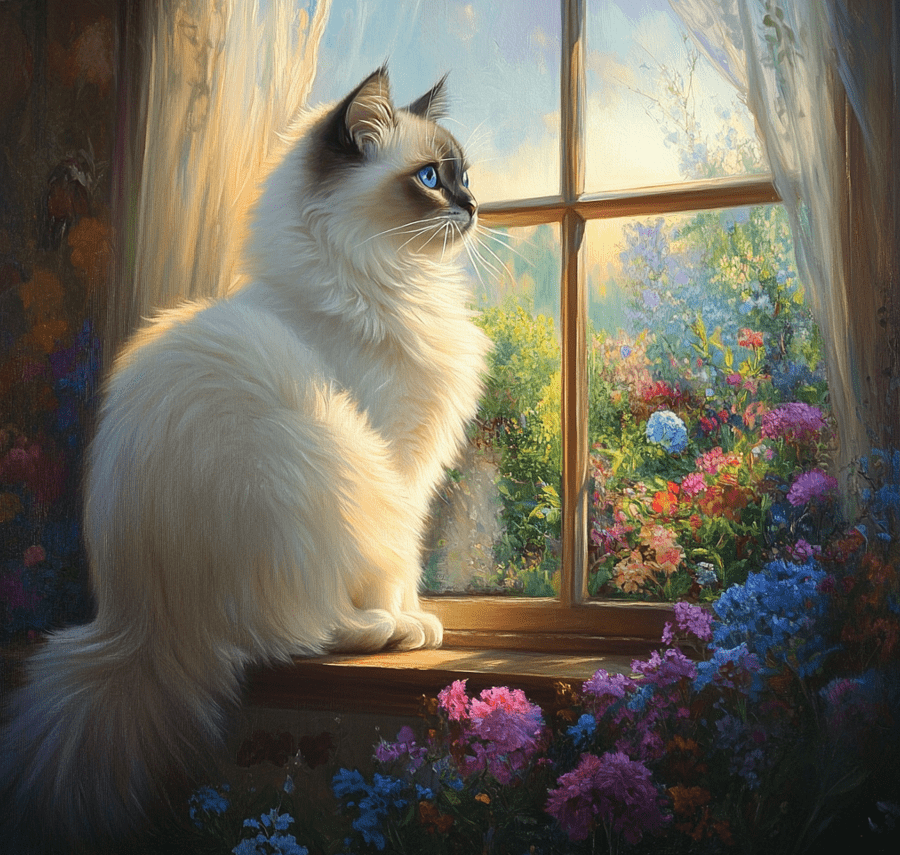
Ragdoll cats are not as instinctively driven to roam as some other breeds, but they still may be curious about the outdoors. This curiosity can lead to dangerous situations, including traffic accidents or encounters with other animals. To address Ragdoll cats’ behavior related to outdoor roaming, it’s best to provide a safe and stimulating indoor environment or supervise outdoor excursions.
Managing Shedding: Understanding Ragdoll Cat Behavior
One of the main issues Ragdoll owners face is frequent shedding and fur shedding on your clothes and furniture. Frequent grooming may assist with this issue. Regular brushing (using a tool designed for long-haired breeds) two to three times a week, periodic bathing and trimming especially dense areas of fur can all help reduce shedding. A well-balanced diet also helps maintain healthy fur and reduces shedding. Ragdoll cats are known for their long, beautiful coats, but they are also prone to shedding. Frequent grooming and a balanced diet can help manage this issue. Ragdoll cat behavior when it comes to shedding can be reduced by incorporating regular brushing sessions and keeping your cat’s coat healthy and free of mats.
Ragdoll Cats’ Behavior: Seeking Constant Attention and Affection
Often referred to as “Velcro cats,” Ragdoll cats thrive on companionship and affection. This strong desire for constant attention can sometimes lead to behavior problems such as clinginess and separation anxiety. To address Ragdoll cat behavior related to attention-seeking, it’s important to establish a consistent routine of play and interaction.

Solutions:
1.Plan a time every day to play interactively with your cat.
2.Play sessions should be short. No longer than 5–10 minutes at a time.
3.Stimulate your cat with cat friendly activity like chasing a laser pointer, feather toys or make it more thrilling with a fishing pole toy.
4.Interactive toys can keep your cat occupied when you’re not there, so they feel less abandoned.
Picky Eating Habits in Ragdoll Cats: Understanding Behavior and Solutions
Ragdoll cats are notorious for being picky eaters, and their eating habits can lead to health problems if not addressed properly. Understanding Ragdoll cats’ behavior when it comes to food preferences can help you provide a varied diet that meets their nutritional needs. Try different food types and serving styles to find what works best for your cat.
Solutions:
1.Try different types of foods and snacks to determine your cat’s favorites.
2.Try out different brands until you find one your cat likes.
3.Mix one kind of food with another, or wet food with dry kibble, to make meals more enticing.
4.Spread food around near your cat’s sleeping space in hopes of eating.
Ragdoll Cats’ Behavior: Litter Box Problems and How to Solve Them
Litter box issues in Ragdoll cats can be a common problem for many owners. Whether it’s avoiding the box, urinating outside, or inconsistently using it, understanding the underlying causes of these behaviors is crucial. Ragdoll cats’ behavior regarding litter box issues can often be resolved by adjusting the litter box setup or addressing any health concerns.
Solutions:
If your Ragdoll has problems with the litter box despite its setup, you can consult a veterinarian to rule out possible medical issues before you consider changing anything in the litter box.
Scratching Furniture: A Ragdoll Cat Behavior Problem Explained
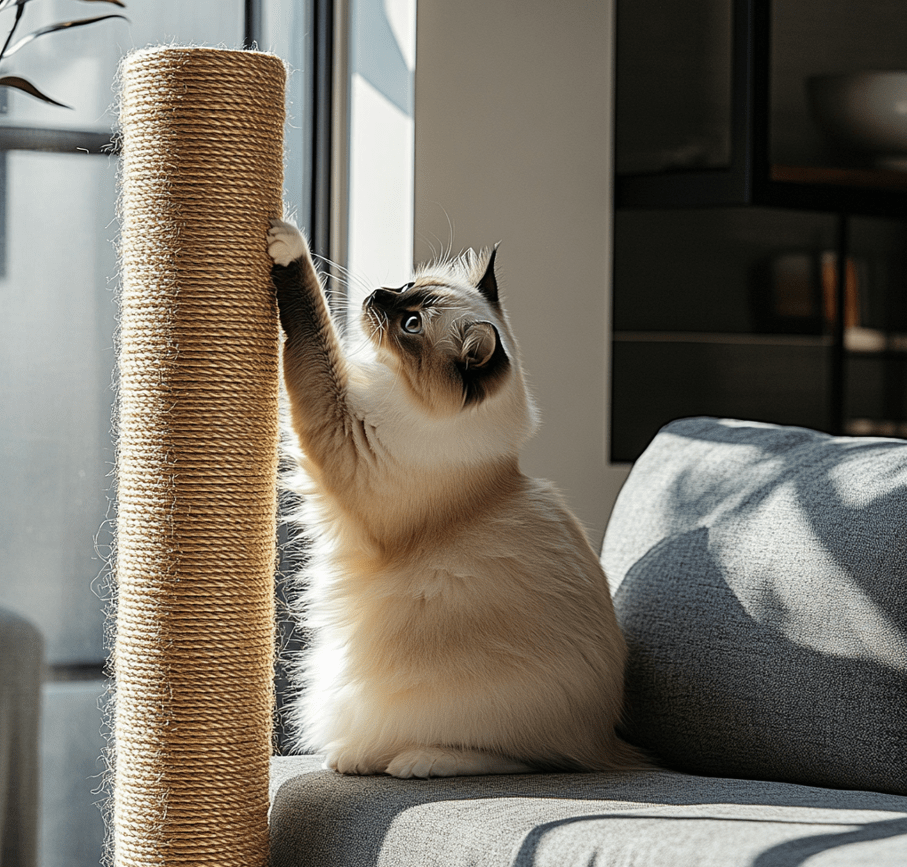
Scratching is a natural behavior for Ragdoll cats, but when it’s directed toward furniture, it can become a problem. Understanding the underlying causes of this behavior—whether it’s boredom, territorial instinct, or stress—can help you address it. Providing alternative scratching posts and enriching the environment can reduce unwanted scratching behavior.
Solutions:
Identify the problem by providing more spaces and by offering natural behaviors (e.g. hunting, climbing, etc.). Many cats feel less threatened when they have vertical spaces and climbing areas to call their own, which is also a great way to reduce destructive scratching.
Weight Management Issues in Ragdoll Cats: Behavior and Health Concerns
Ragdoll cats are prone to obesity, especially if they lead a sedentary lifestyle or have unrestricted access to food. Ragdoll cat behavior related to overeating or lack of activity can lead to serious health problems, including diabetes and arthritis. It’s important to monitor their diet and ensure they get enough exercise to maintain a healthy weight.
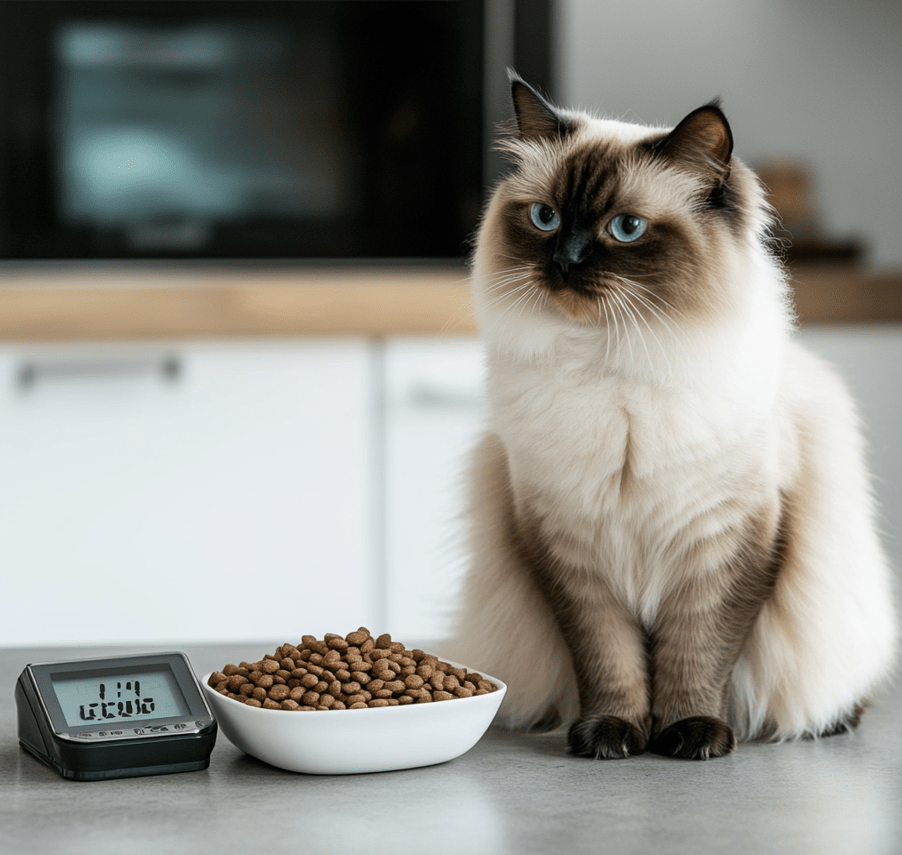
There are many common health conditions that excessive weight in Ragdoll cats can lead to, including:
1.Diabetes
2.Cardiovascular diseases
3.Hyperthyroidism
5.Arthritis
6.Joint deterioration
7.Pancreatitis
8.Liver and kidney dysfunction
If you have the option, feed wet food and not dry kibble—wet food tends to have lower calories. Moreover, serving less and more (smaller, more frequent) meals during the day rather than two servings is helpful in weight regulation for the individual.
Increased Vocalization in Ragdoll Cats: Understanding Behavior and Solutions
Increased vocalization in Ragdoll cats is often a sign of boredom, anxiety, or a health issue. Understanding the causes of excessive meowing or vocalization is key to resolving the behavior. Engaging your Ragdoll in interactive play and providing a stimulating environment can help reduce vocalization and promote a calm, content cat.
If you are faced with excessive vocalization, then you may do the following:
1.Vocalization can be triggered by hunger. Treat your cat occasionally, or more enticing food options like wet food or raw meat.
2.Younger Ragdolls may benefit from additional family interaction to help minimize vocal behavior.
3.Longer isolation or exposure to unusual surroundings can trigger stress which can result in long-term meowing.
4.If separation anxiety is suspected, spend time with your cat to provide comfort.
5.Seek advice from a vet to eliminate health issues, consult a professional trainer, and identify the triggers to manage the behavior successfully.



